15 Not so common tips for Chess beginners
Beginning to learn chess is like climbing a mountain.
The road is deep and preparations tend to get complicated.
It’s hard to start and even harder to know someone that could guide you properly, which is why I want to give tips for actual beginners that are likely to be not aware of what they are doing.
I’m going to give my best to give valuable advice. The best tips for any beginners would be the following:
1.) Learn the regular and irregular moves of pieces and pawns
The first step of actually learning chess would be learning pieces! The game after all revolves around the idea of using these pieces to outplay an opponent. That is something that could not be achieved without knowledge of its basic movements. By that, I mean all of them!
I know it can be pretty intimidating at first since there are so many pieces. There’s a total of 16 for each player with six different unique classes. A combination of these could be enough to make a beginner’s head spin around. So, what are the regular moves?
Standard moves
Every piece in chess has its own unique movement patterns by that, I refer to the way they move. This is called standard due to the fact that a lot of the unique movements bear similarities to other pieces.
Special moves
Specific pieces have abilities not relatable to the others, these are called special or something that only applies in a specific situation.
As for the special movement of the pawns I’ve actually written an interesting article about it. Titled “weird pawn moves you should know” which you can find the link here (will open in a new tab). Check it out if you have the time.
2.) Open with e4, d4, c4, or Nf3.
These are the most popular first move for white. They’re not only popular they’re also one of the most effective. All of these moves have one thing in common, which is seeking control towards the center using pawns or pieces. For reference, here is e4:
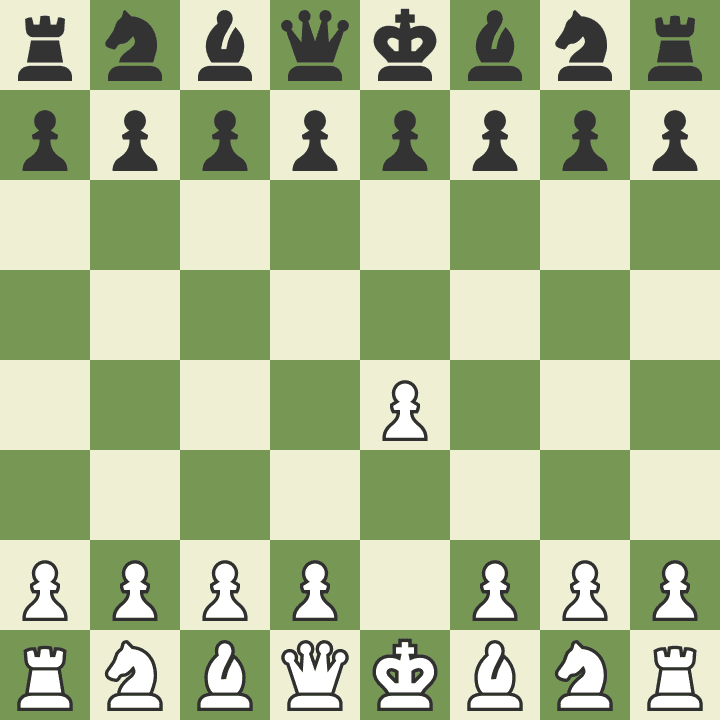
This is d4:

c4:
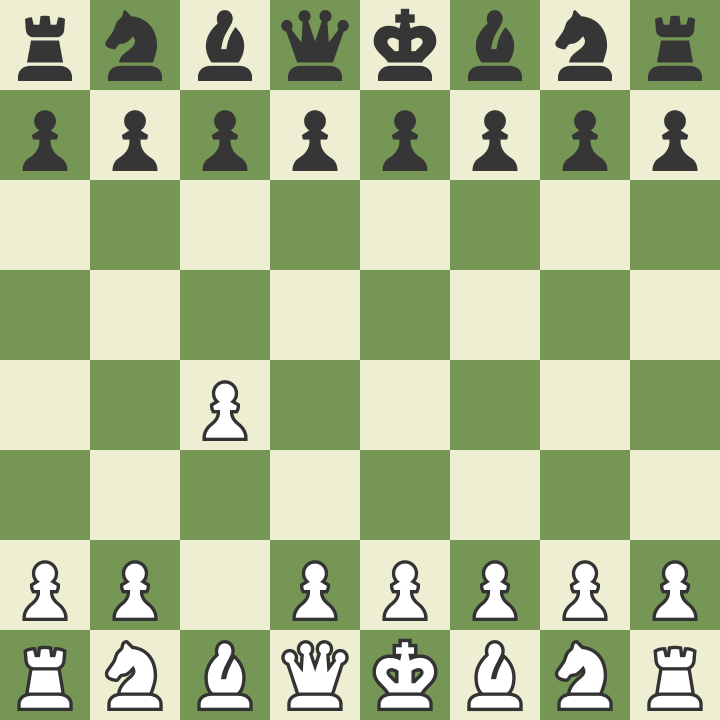
And nf3:
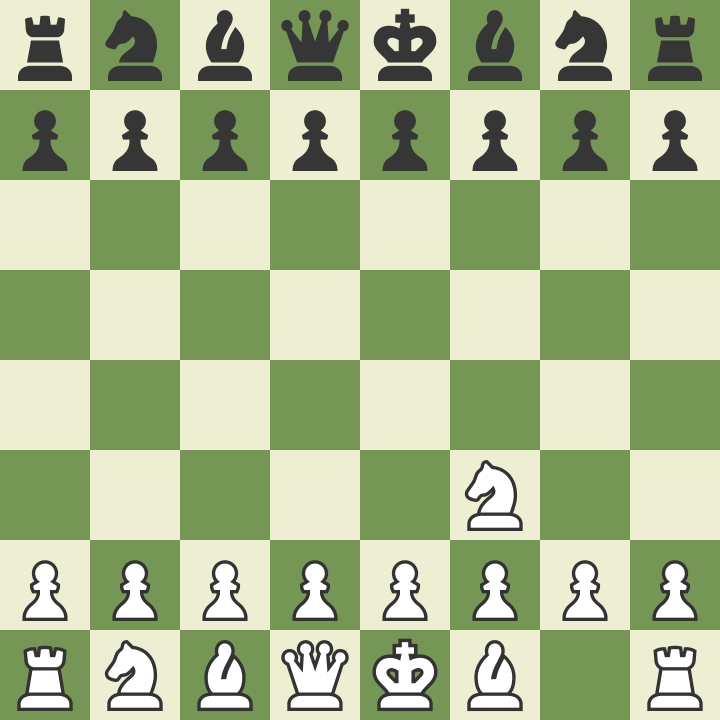
If you are an advanced player though You might want to look into another article on this website. It’s titled “best first move for white” which is a somewhat deep explanation of the first move. You can find it here if you’re interested (will open in a new tab).
3.) Learn to mate with just Queen or Rooks.
Mating with King and Queen
Mating with only a king and queen is one of the fundamental skills in Chess. It’s a great place to start when learning checkmates. It is somewhat easy, but harder for a beginner to grasp especially in time pressures. This kind of position (mating with a Queen and King) occurs in the endgame.
Meaning the clock if there is any, would be close to ticking down. Adding to this, the end game determines who actually wins the game. Making learning the mate much more desirable.
Mating with King and Rook
Now, the king and queen combo are frequent and easier than the other mates. But the same can be said with a rook and king! I can even argue that it happens more often than a queen and king. Therefore making it an essential practice to learn mating patterns.
It is slightly harder than the previous mate. But should be manageable than the other combinations.
4.) Control the center with pawns or pieces
Earlier, I’ve said to open the game with e4, d4, c4, or nf3 while playing white. This is an extension of that to the game in general. The center is the area where most pieces are powerful.
Take this Knight for example:
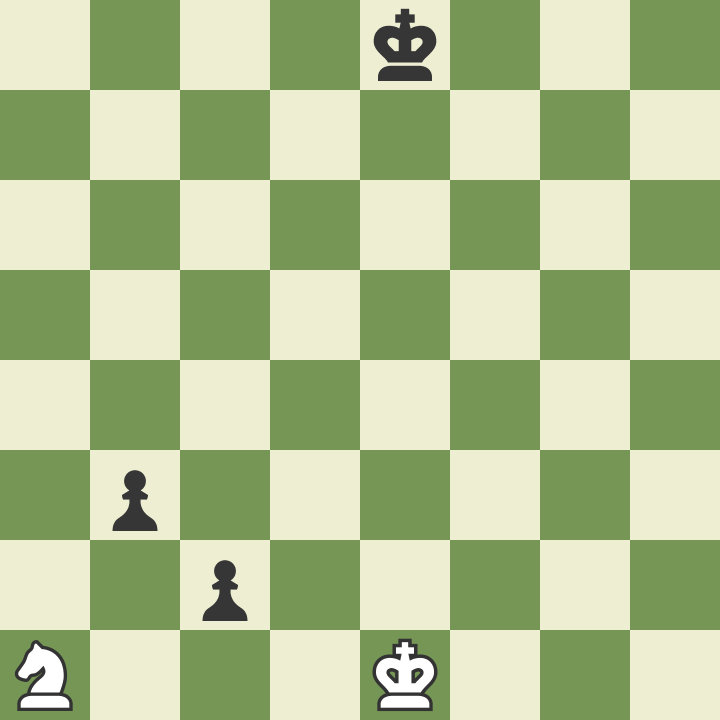
It can only move to these two squares while at the edge of the board.
At the center however:
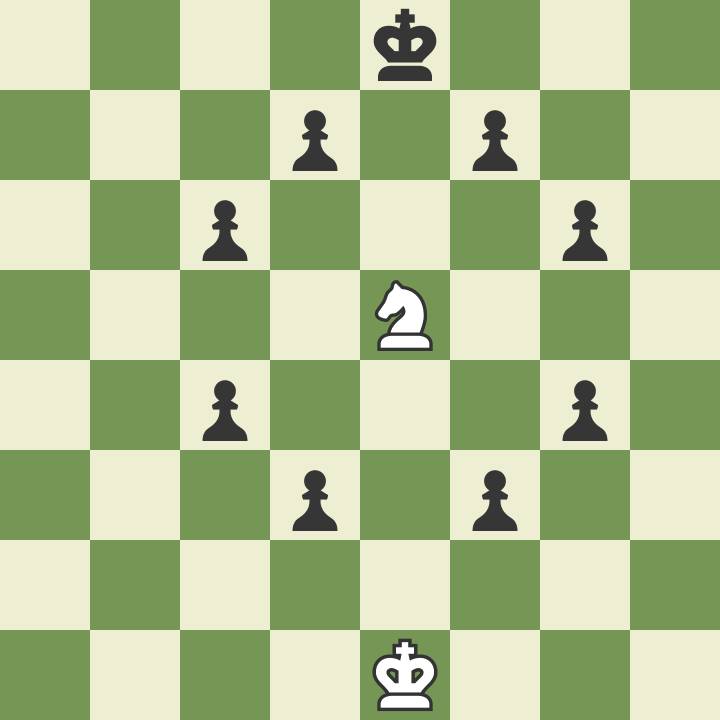
It can move a total of eight tiles! That’s insane, considering how weak it was in the corner. This is true for all the pawns and pieces. There are rare occasions however where controlling the center is not ideal. But generally, controlling the center gives the player a good game.
You could actually see this as a recurring theme in games of advanced players, where both sides try to put all of their pieces near the center as soon as possible. This is a good principle to implement early in the learning process.
5.) Keep the Queen inactive early in the game
The queen is the most valuable piece in the game and although this is impressive it also means that the player could not afford to lose this piece. Any attack on the queen would force the Queen to make a move since trading it for a lower piece is not ideal.
Look at this example:
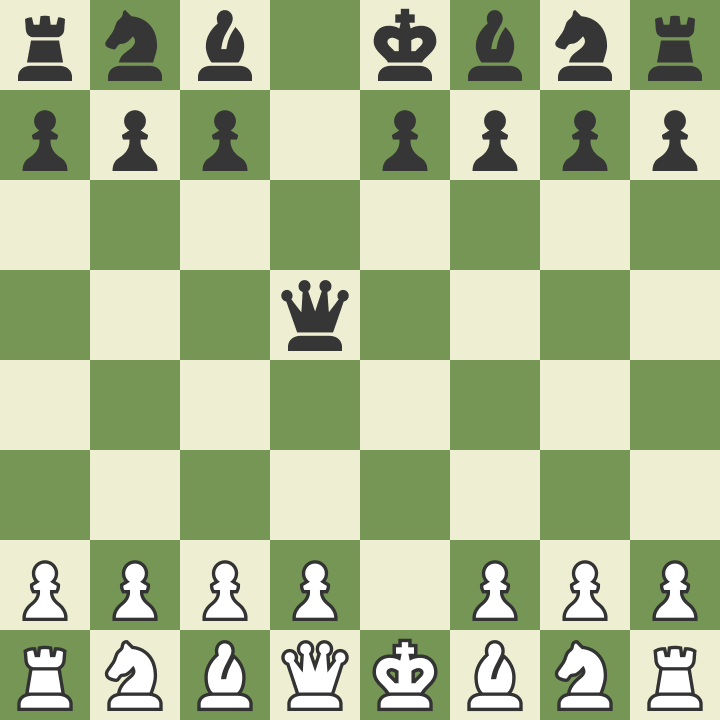
The queen got out early in the game. You may think this is good since developing pawn and pieces in the center is the way to go right? Well, not with the queen! A too active queen will get harassed by lower pieces. As you can see here:

The White Knight is attacking the Queen. The queen is then forced to move. Let’s say it moves and tries to keep itself in the center. White gets to move again:
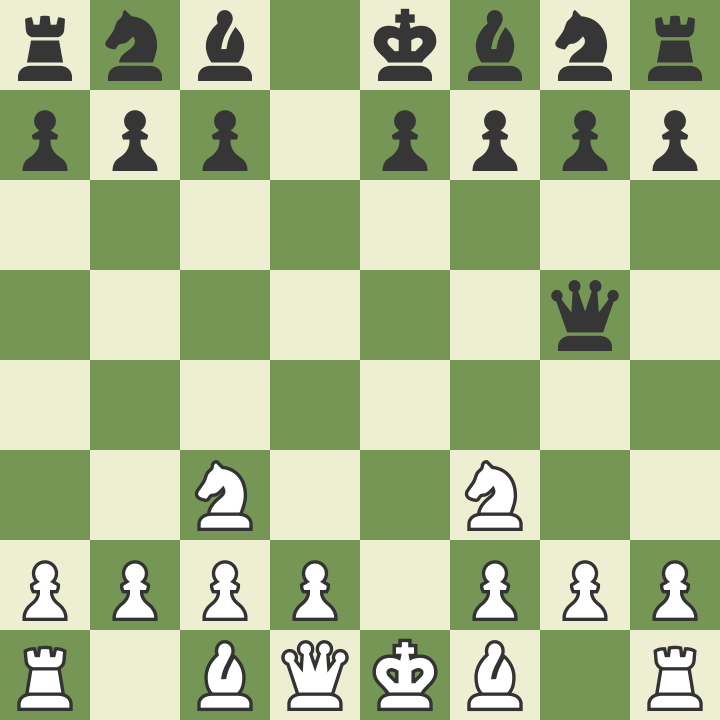
The queen is under attack once again! It has to move one more time, else the queen will fall. Let’s say it tried to keep itself into the center not learning the lesson:
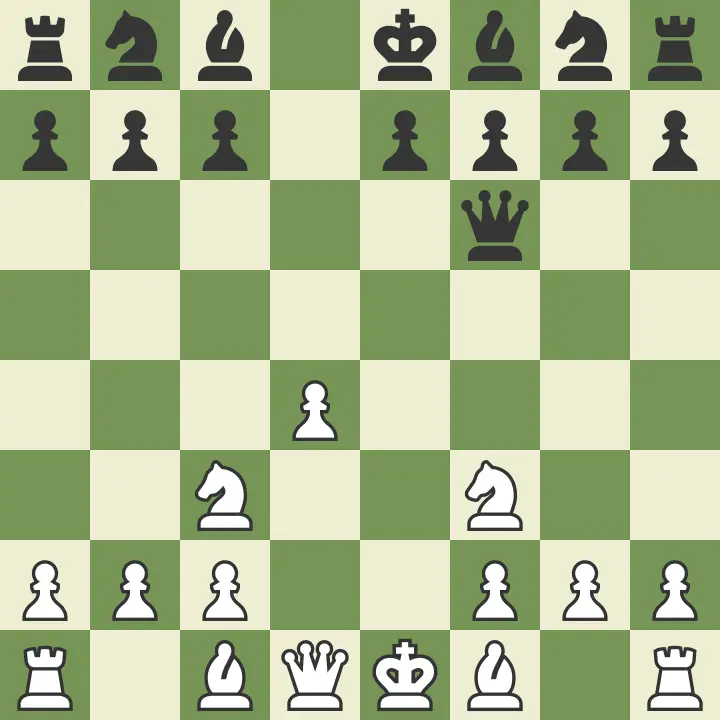
This is an excellent position from White! The Knights got out and the Bishops got a clear line to be placed near the center. I hope you are starting to see my point. The queen got into a pointless runaway. When all the opponent’s pieces actually gets to control the center easier.
As you can see in the diagram above, almost 4 pieces (when the bishop gets out) control the center for white. While black with just one queen! White can harass the Black Queen in the future if it stays near the center.
6.) Get the Rooks into columns that don’t have pawns.
Columns refer to the vertical line up and down the chessboard. As you may know, the rook can move in a horizontal and vertical line. The vertical is the problem, pawns often block the rook’s vertical reach. See this sample:
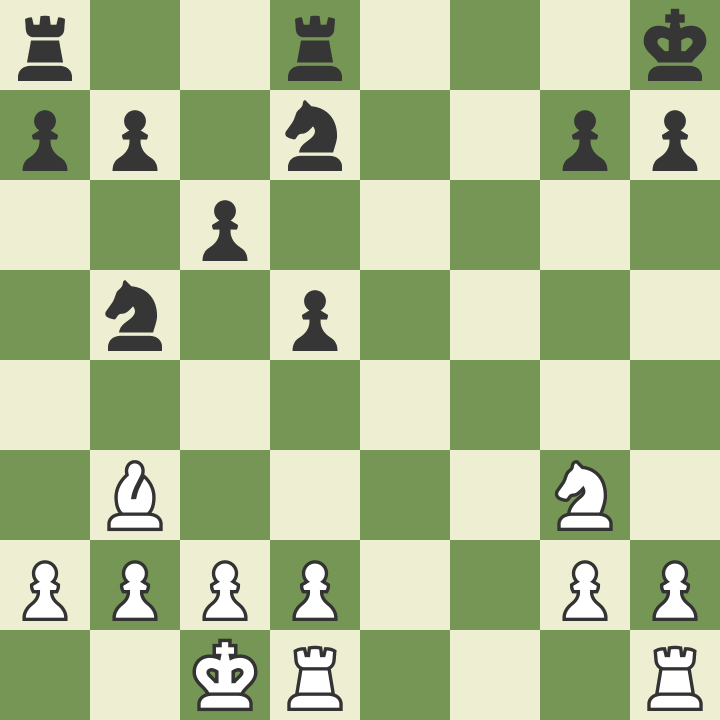
The White rooks look pretty sad on those tiles, don’t they? They don’t look very useful to me. I think they can be better. How about we transfer this two into an open column:
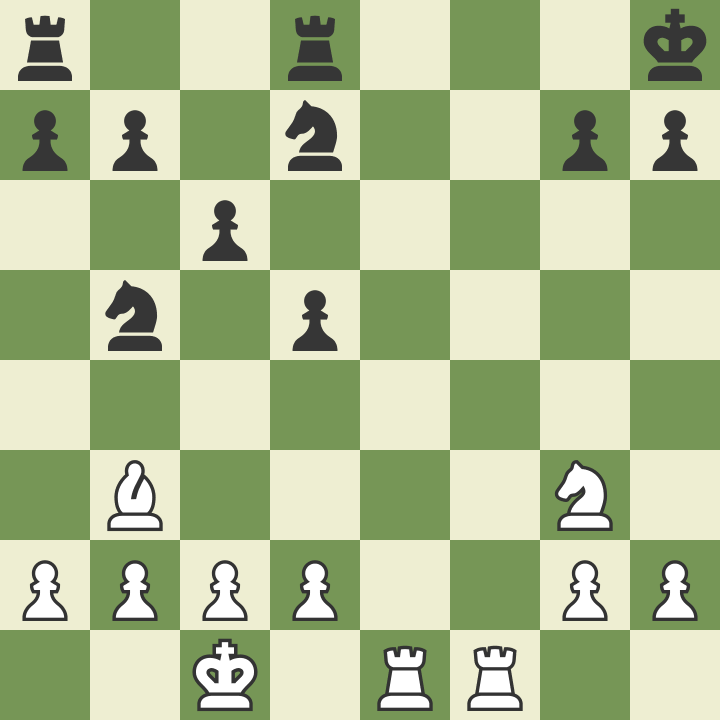
The rooks look powerful, don’t they? The open column gives them the space they need to dominate. Getting these two guys out is a good way to assemble your pieces. The rook after all is the most inactive piece in the early of the game. Learning to place them in open columns solves this problem.
7.) Don’t make unnecessary pawn takes
Both player’s schema early in the game would be to control the center. This would make the center a very high tension pawn battle. Making unnecessary pawn takes is a surefire way to lose this battle. I guess it’s just better to show it:
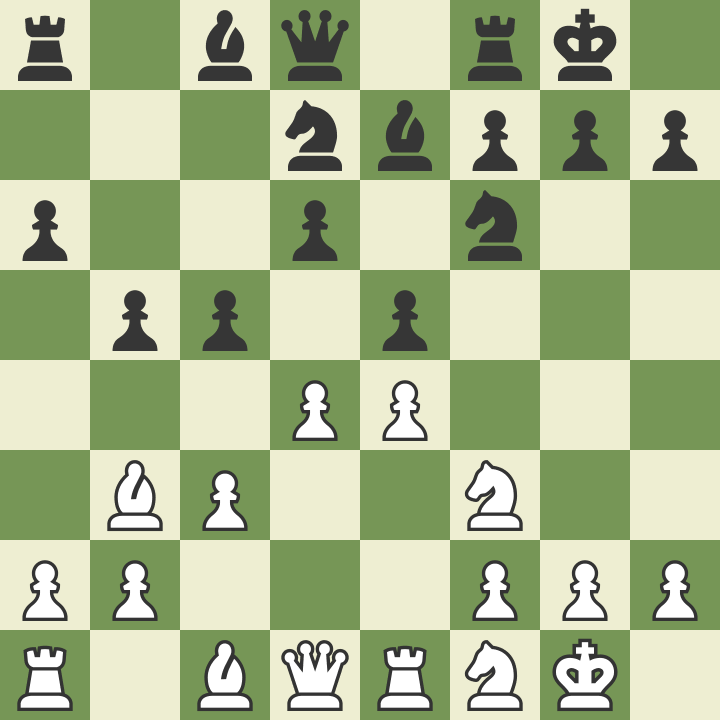
This is a very well-known position in the Ruy Lopez (it’s a chess opening). As you can see, both players are fighting for the center. Let’s say White takes the e-pawn here:
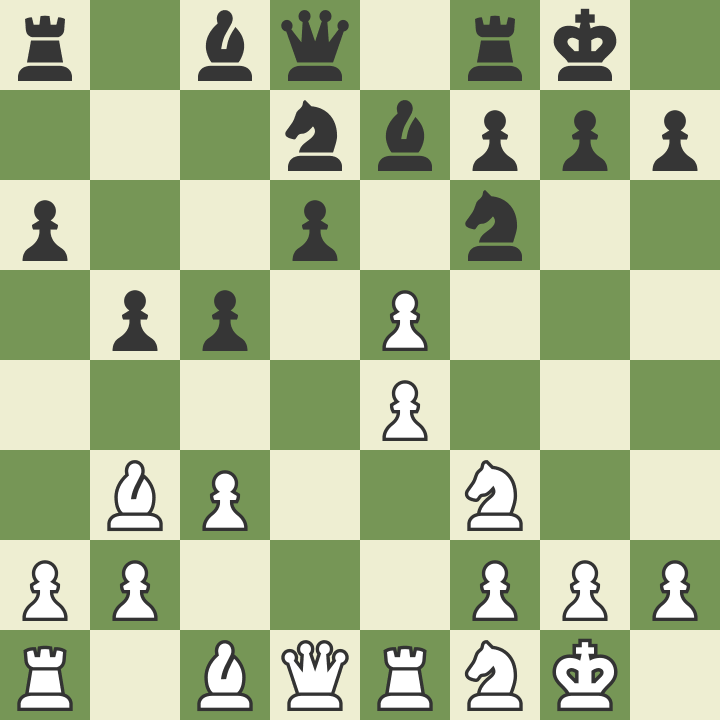
Black recaptures:
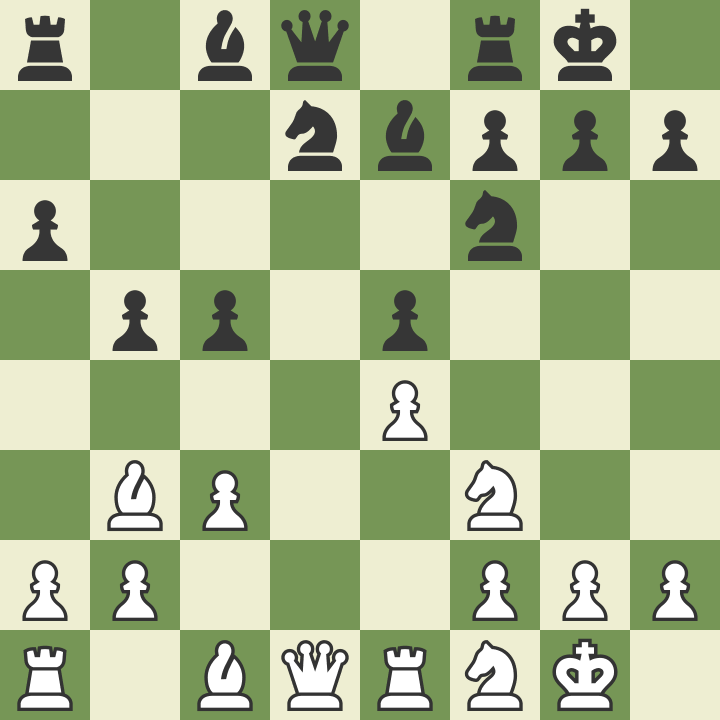
Look at this, it seems that there is not much difference in the position. But actually black controls more of the center and queenside with those pawns. You may think this is a little bit unnecessary, but it’s not. Fighting for space is the theme of most games. Losing the space battle early will make it harder for the rest of the game.
But what about the other option? What if the c-pawn was taken:

Black recaptures with the Knight:
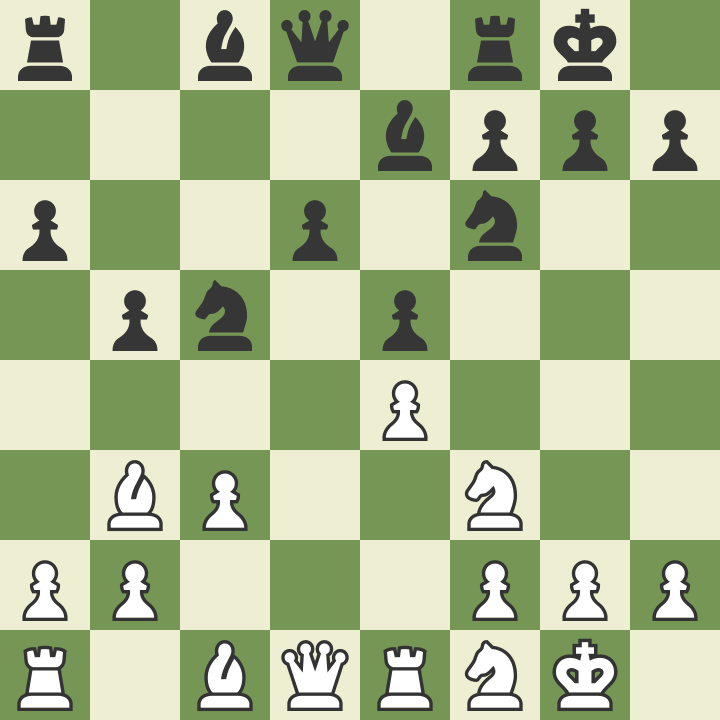
This is an excellent position for black. Not only did the Knight have an outpost. The bishop is also under attack. Black just won the space battle. But what if white in that position pushes the pawn:

White’s central control is now just phenomenal. White doesn’t make unnecessary pawn takes on top of grabbing the center. This is definitely a more comfortable position especially for beginners compared to the previous options.
8.) Get rid of bad pieces
Bad pieces are those that don’t look very useful. Getting rid of them means trading for the opponent’s other pieces. Refer to this diagram:
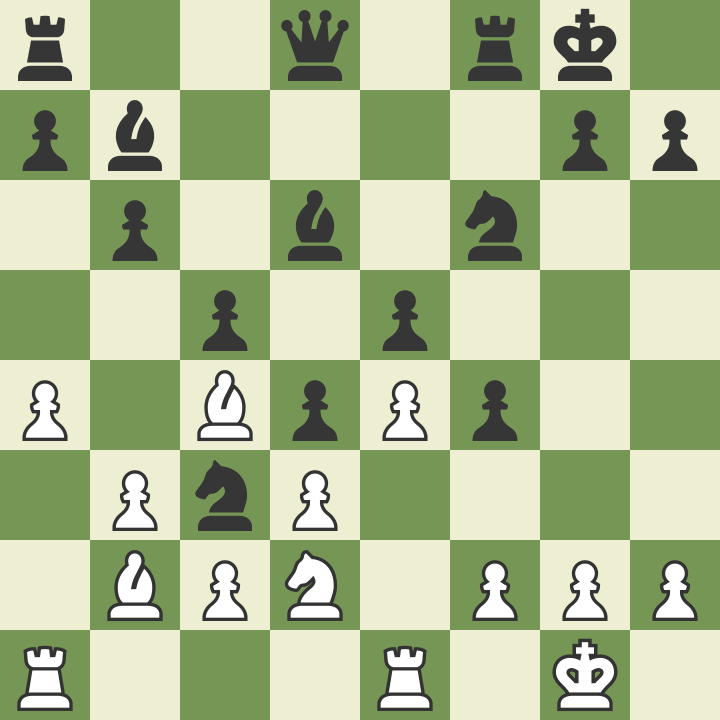
Can you spot the bad piece for white? The dark square bishop of course! Almost all the tiles that it can influence are blocked by black’s pawns. The space is pretty tight. It’s hard to see a future for this piece. The black knight on the other hand is just a monster.
It attacks everything from that outpost! Leaving it there will make the position extremely cramped. But what if we trade the bad bishop for the extremely well-placed knight:
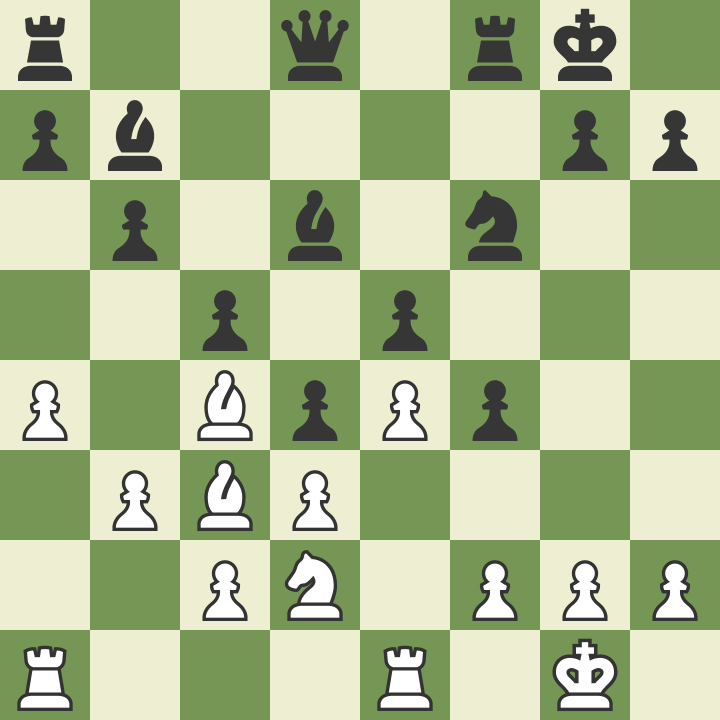
Pawn recaptures:
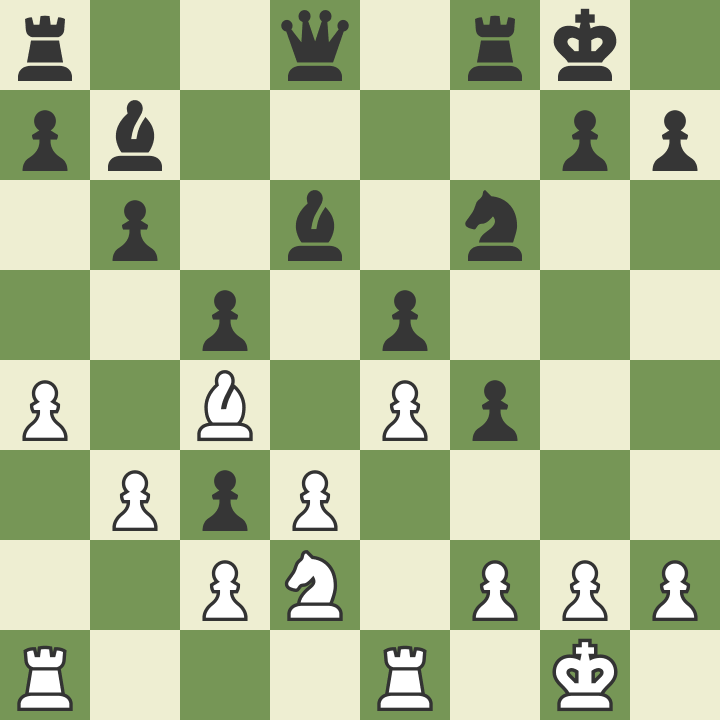
Knight moves:
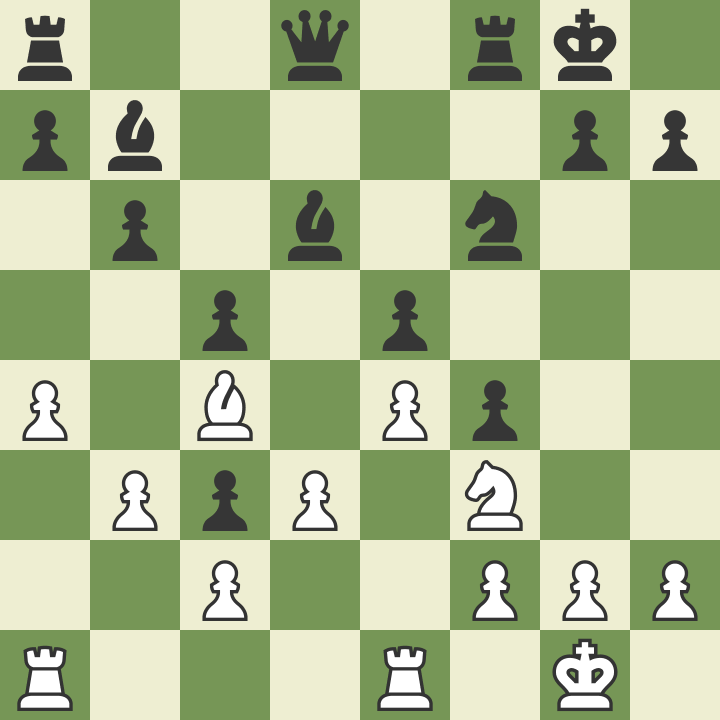
Would you look at that! The position just got a whole lot better for white Black is still slightly better here. That’s really really slightly. I can say this position is almost equal. Just from trading the bad bishop for the good knight!
9.) Prioritize the Knight and Bishop in the early phase
The early phase in any chess game is developing mania. Meaning which side gets to make their pieces useful first will get lots of advantages. Pieces near the center are extremely useful. Especially the knight and bishop.
Both of these are mobile enough to be developed by just one or two turns. Unlike the Queen and rook. They are also not valuable enough to harassed like the queen. Since the player can actually afford to trade them. Like this one:
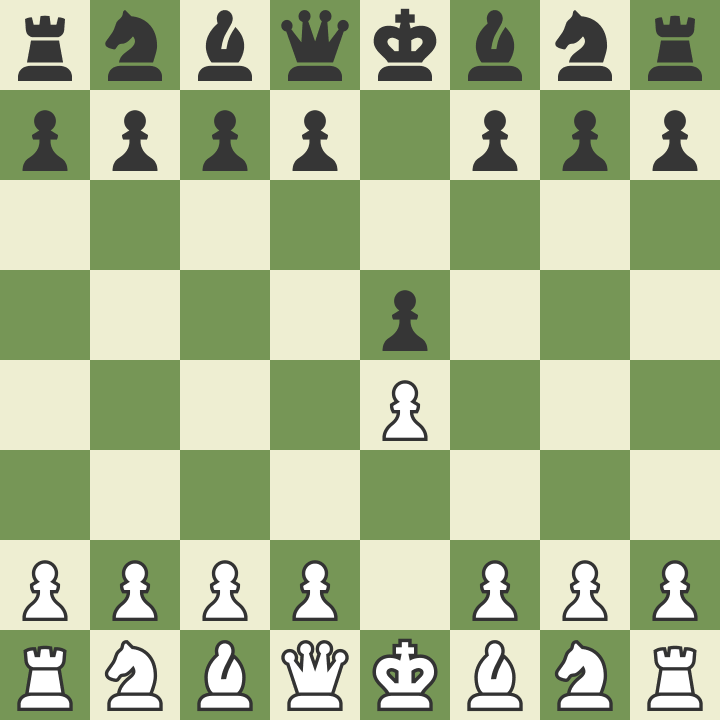
Both players here attempt to control the center with their pawns. Next:
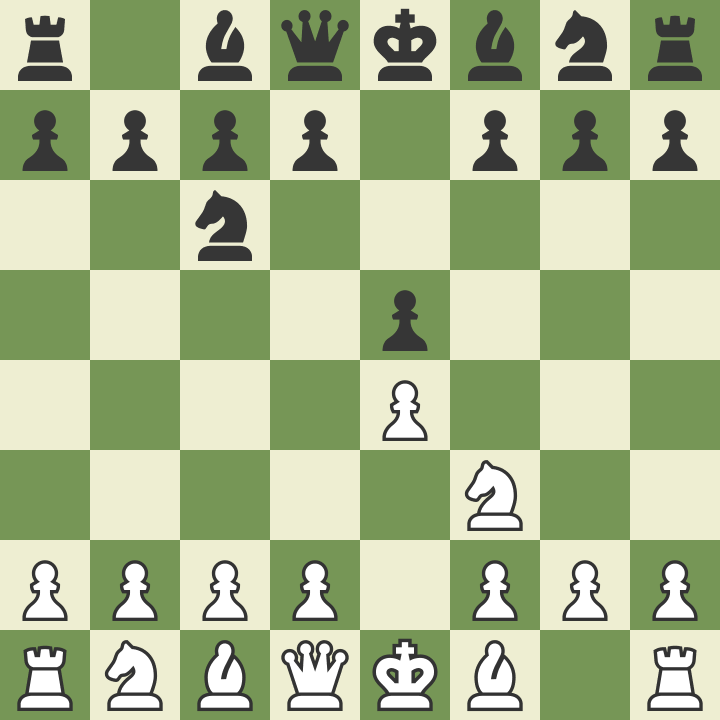
Each knight gets to move near the center since it only takes one turn to do so. Finally:
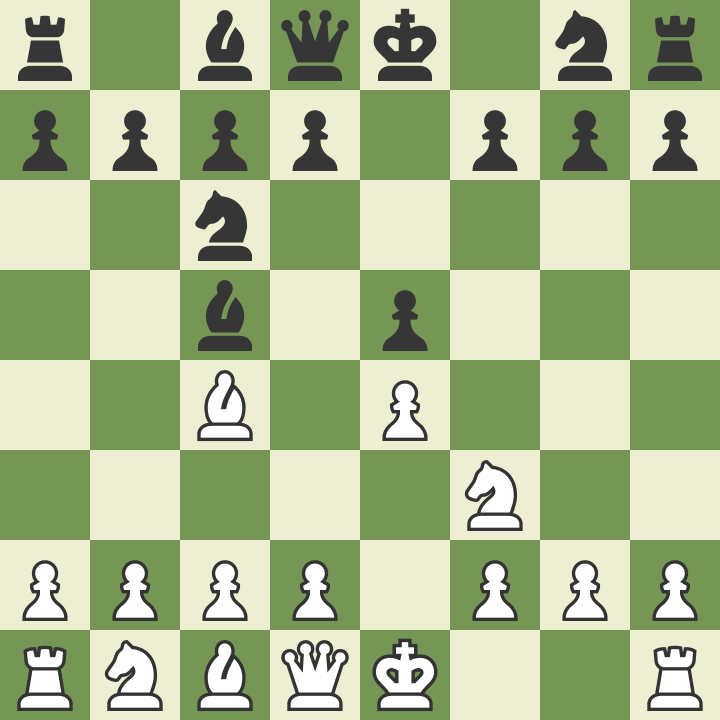
The bishops get activated since the first pawn moves give it space to be played near the center. It only takes one for the Knight and two for the bishop counting the first pawn move. This actually a well-known opening called Giuoco Piano It is a frequent position seen even on the professional stage.
10.) Understand opponent’s motives
Chess is played by two people. Meaning you don’t have to be the best, you just have to be better than the opponent. Of course, being the best in the game is very helpful. But it means winning only requires outplaying the opponent at that moment in time even if that player is generally better than you.
To give the best reply means to understand the opponent’s initial move.
Understand their motive. Each move has a purpose, and you should find that purpose. Whether it’s development in the center, trying to fork (double attack) pieces, or getting to the
endgame. The only way to make a good counter plan is to know which plan to counter. This actually becomes easier as you get better in the game.
11.) Don’t waste a tempo
Remember why you shouldn’t activate the queen early in the game? It’s because you lose time! When you get to play with your queen around. The opponent already got their pieces out in the open. Time in chess is called tempo. Let’s see that Giuco piano again:
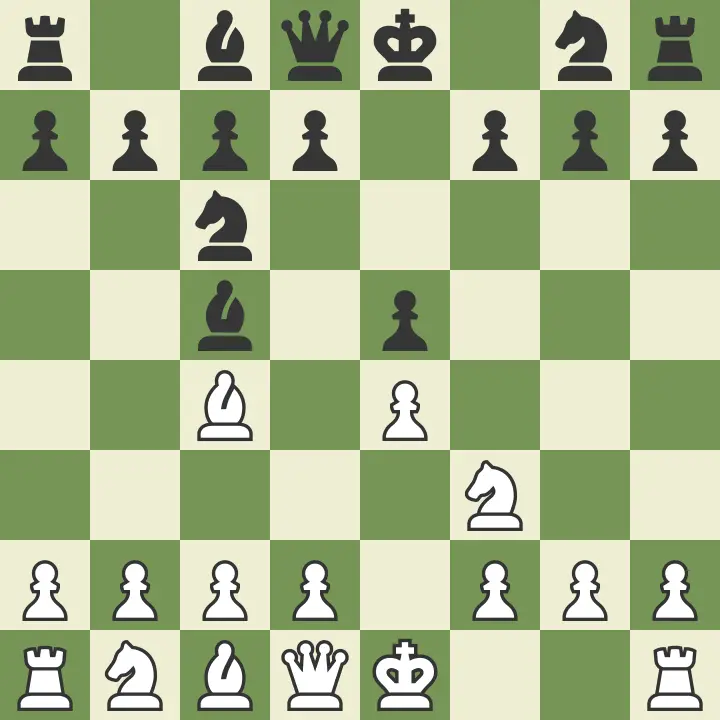
Let’s say white castles and black moved his Knight:
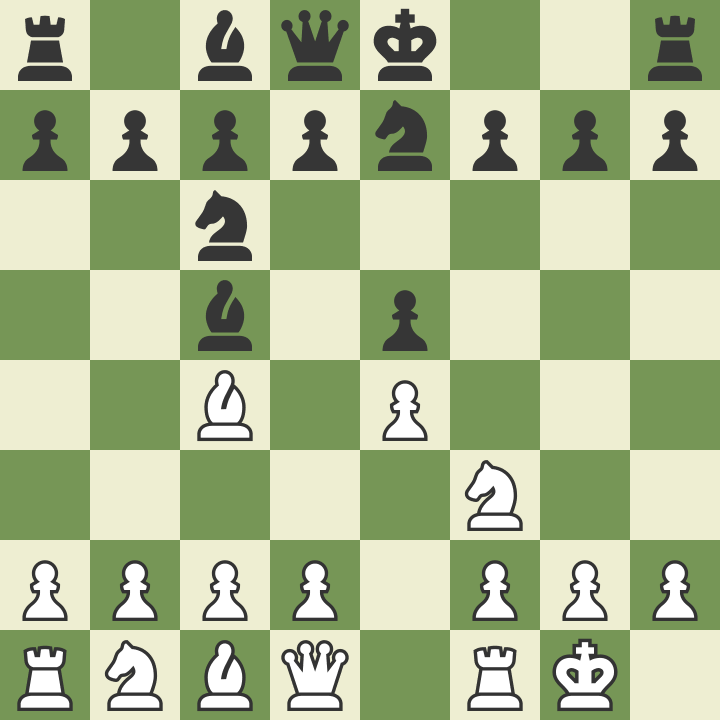
Then white developed the Knight while Black moved the same Knight once again:
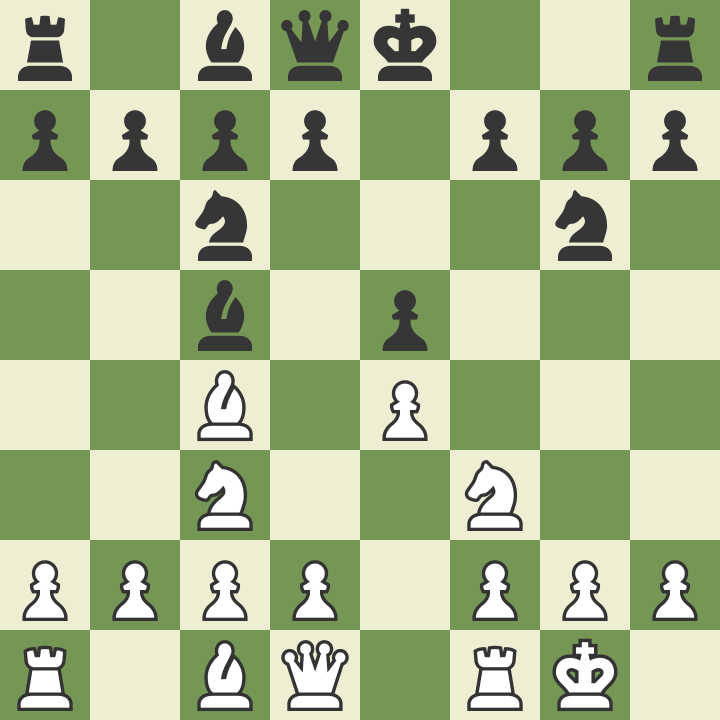
Let’s say white develop the rook while White moved the same Knight again:
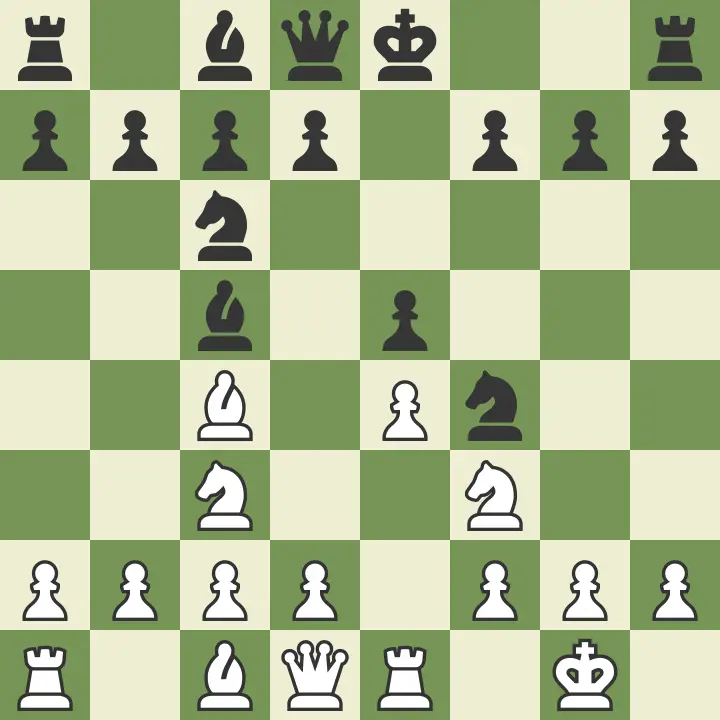
This may not seem much to you but White is actually better here. Most of the pieces are out in the open. With just a few more moves White should be near to full development. It’s the same idea applied to the principle “don’t move the same piece twice”. Since you would lose tempo.
12.) Castle King side as soon as possible.
Castling kingside is often the best and safest choice when it comes to castling Even looking at professional games, Kingside castles are much common and preferred. Just look at this example:

White can either castle king side or queen side here. Let’s look at the queen side:

Say black pushes the queen side pawn:
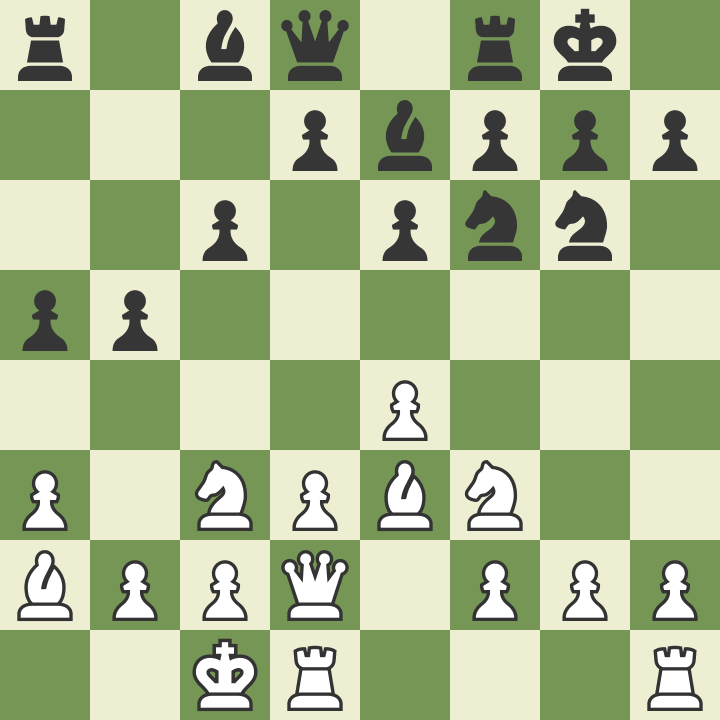
Black is in trouble! That queen-side pawn chain is beautiful. The attack is happening much faster for black than white. But what if in that position, Kingside castle was chosen instead. This is what it will look like:
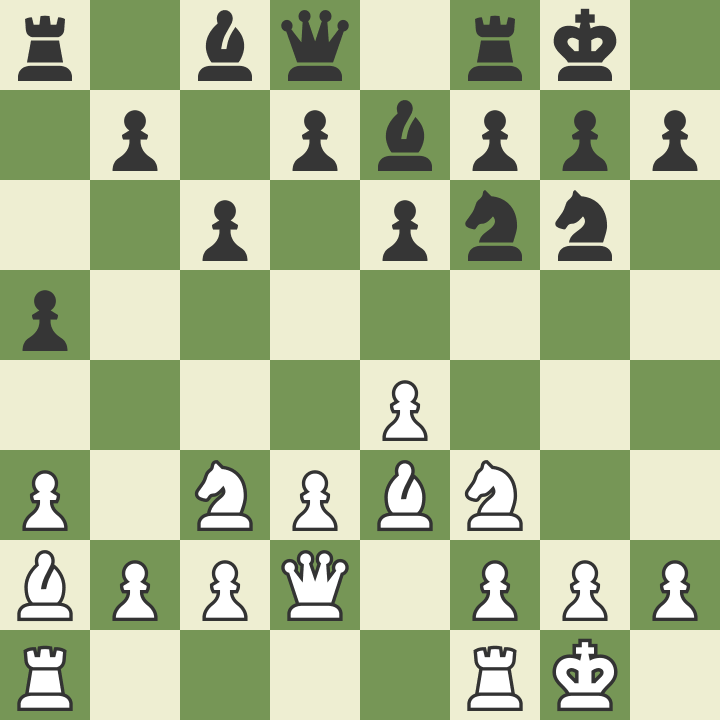
See the difference? It’s pretty safe, nothing crazy is going on. I say castling queenside is not a mistake but should be avoided as a beginner. Things could get more complicated than you could handle!
13.) Learn basic theoretical value
Each piece has its own unique value. Each piece after all has different characteristics. Meaning one is more powerful than the other. The value of pieces often plays a huge part when making trades. A player must know all of the piece’s potential in order to not lose on exchanges.
Below is a table for the basic chess theoretical value.
| Piece | Theoretical value |
| King | Infinite |
| Queen | 8 |
| Rook | 4 |
| Bishop | 3 |
| Knight | 3 |
| Pawn | 1 |
A big disclaimer that this is not an absolute basis. The value of pieces will change from time to time with different factors. But is a good indicator when considering trades of one piece to another. Think of the score in the table as power levels.
The more score the player acquires in a trade, the better. Exchanging a rook for a queen as an example is ideal since the Queen has a higher score. Exchanging knight and a bishop for a queen is also excellent since 3+3 =6. And six is still lower than 8 so you would still win that exchange.
14.) Never try to outrun the clock
Outrunning the clock involves moving faster than how you normally play. There are of course situations where this is a must. Especially in shorter time controls and in end games where the clock is about to die.
The problem with beginners, however, is they try to beat their opponent with speed rather than precision.
And I tell you this is not a good idea The better player would always come on top against a beginner that try to rush things. So what I would recommend is forgetting the clock part and focusing more on the game.
Here is a table for some famous time controls:
| Category | Time control |
| Bullet | 1+0 |
| Bullet | 2+1 |
| Blitz | 3+0 |
| Blitz | 3+2 |
| Blitz | 5+0 |
| Blitz | 5+3 |
| Rapid | 10+0 |
| Rapid | 10+5 |
| Rapid | 15+10 |
| Classical | 30+0 |
| Classical | 30+20 |
The first number would be the first minute given to a player. The plus (+) signs are increments, meaning seconds added after every move. So 10 + 5 for example, would be initial 10 minutes and added five seconds for every move made.
Adjustments could be made once you’ve played enough of the time control. So until then, do not rush things!
15.) Solve Endgame puzzles
Solving puzzles of course would get you good in chess. But notice how I say “endgame puzzles”? Most beginners will often look for opening or middlegame tactics. Well in fact the very essence of chess can be found in the endings. It’s literally chess with a few pieces left.
Solving the opening and the middle game before the ending ironically would make things complicated. You could spend hours memorizing patterns without actually understanding them. Start where there are a few pieces and I can assure you, most principles you learn here will be applied greatly in the early phase of
the game.
A Good endgame player is better than a player good at openings.
Wegochess
But ignoring all of this, the end game is the place where the winner is determined. A bad opening game with a good endgame would still win you the game.
Final thoughts
Being a beginner especially in chess is a bit overwhelming. But this can be simple when consuming the right advice. So find the best source to give you that guidance! It will make things easier for you. Check out my homepage by the way if you like more content!
